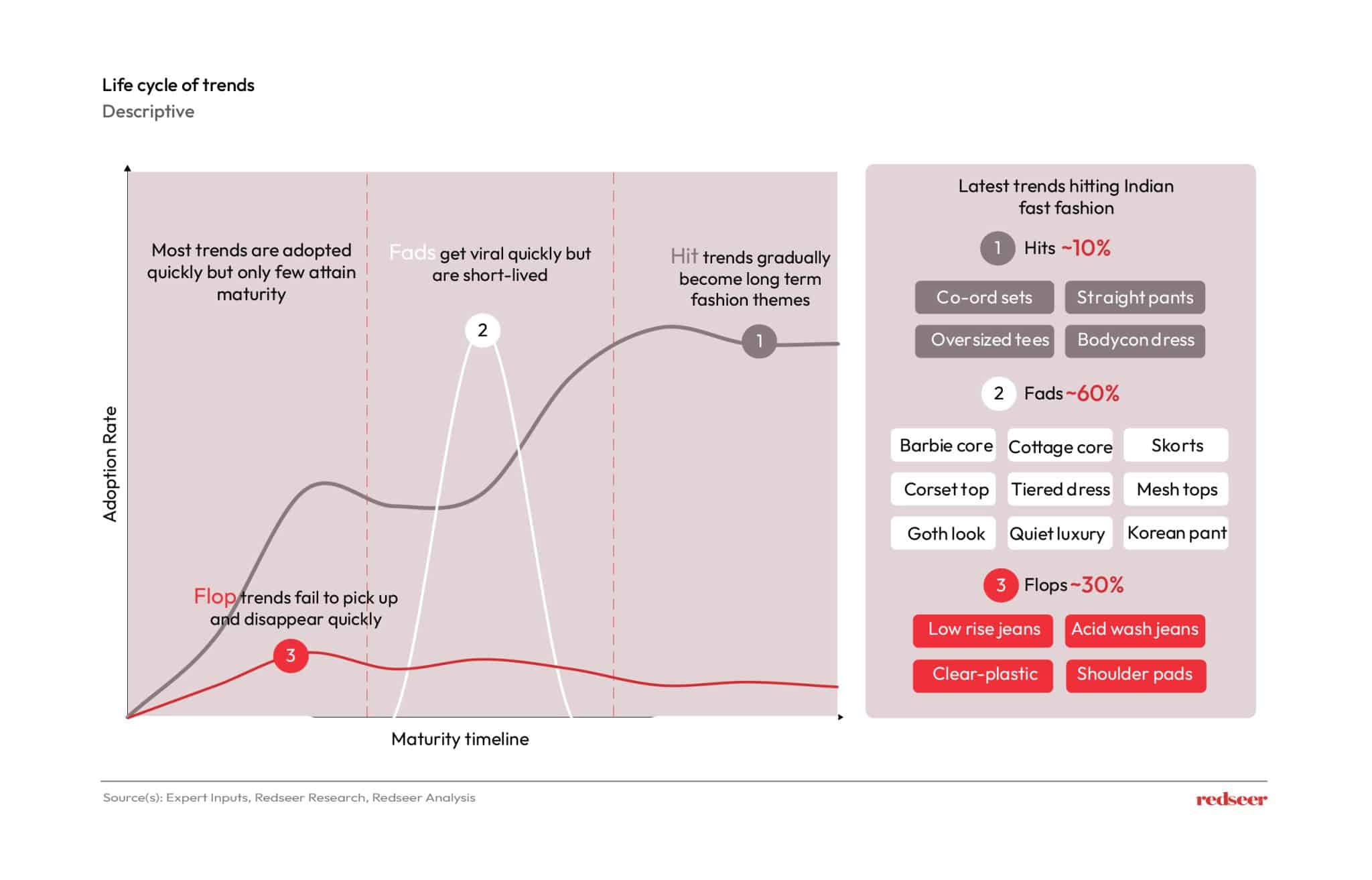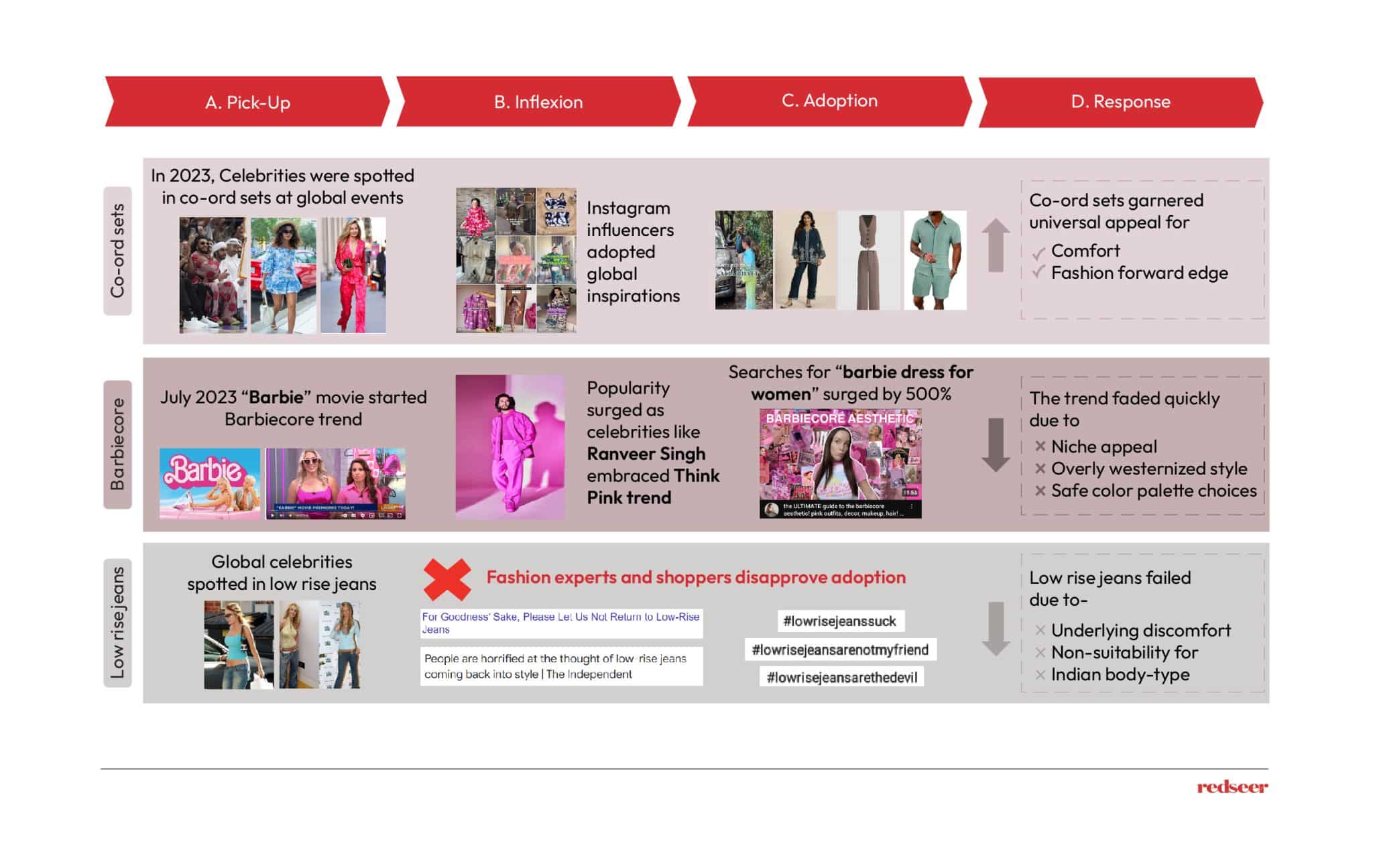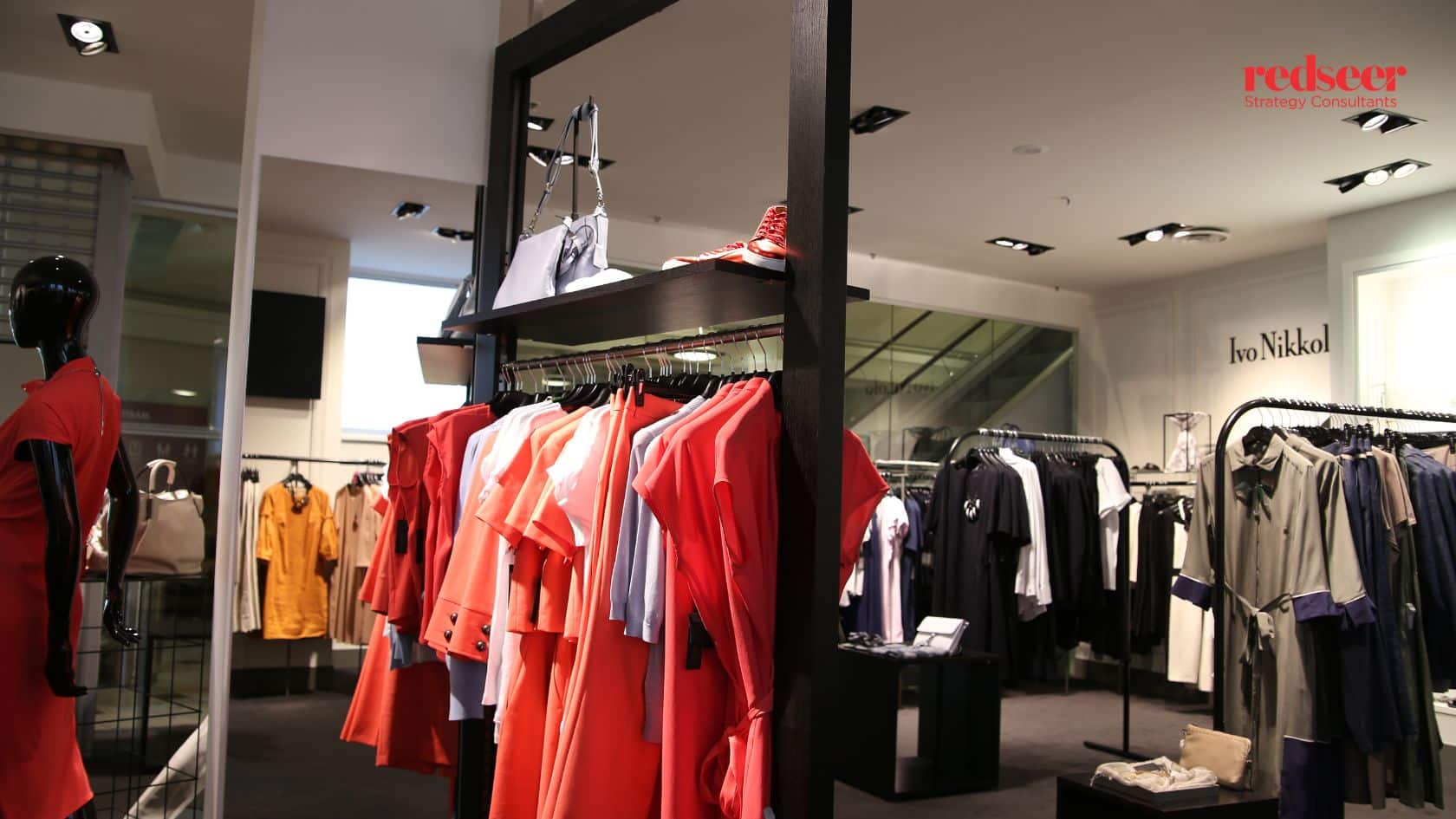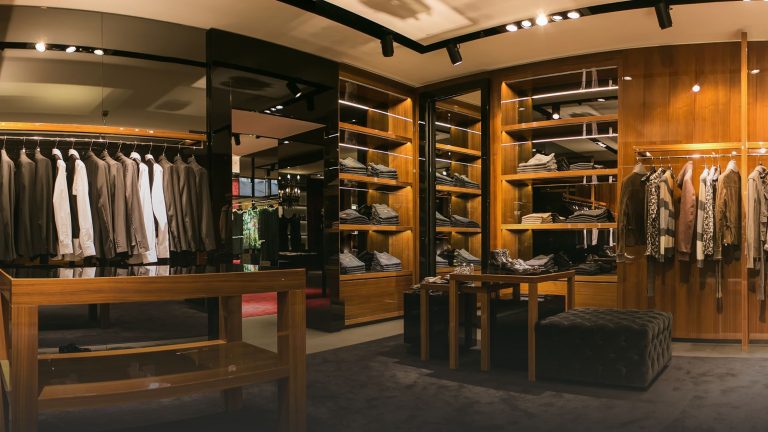Trends evolve at breakneck speed, but are fashion brands truly keeping up with the demands of consumers? In India’s current fashion landscape, there is a clear gap between the brands’ offerings and consumer preferences. This disconnect has created a prime opportunity for fast fashion brands to disrupt the industry by swiftly capitalizing on the latest fashion trends.
In the fast fashion industry, staying ahead is no coincidence—it’s a strategic art mastered by those who anticipate trends before they hit the mainstream. However, identifying trends is just the beginning; the real challenge lies in predicting their longevity, turning them into enduring fashion statements, and generating market buzz. It’s not just about spotting what’s hot; it’s about crafting iconic collections that resonate long after the trend wave subsides. This nuanced approach is crucial in a market where speed and insight are the keys to staying ahead.
That’s where Redseer Strategy Consultants can make a difference. With our expertise in Fast Fashion cycles and market dynamics, we guide brands through the complex process of trend identification, ensuring they don’t just follow trends—they set them.
In the sections ahead, we’ll explore the importance of harping on the right fashion trends, how brands do it, and the key whitespaces. The ultimate goal? Not just to keep pace with the market, but to lead it.
Trend identification – the first & the most critical aspect for a fast fashion brand!

Trend identification is akin to fashion alchemy—turning raw concepts into coveted items that define each season. In the fiercely competitive fast fashion landscape, excelling in this art is essential for setting your brand apart. But the real challenge lies not only in spotting emerging trends but also in fully harnessing their potential to create collections that drive impact.
Among the three phases of production—pre-production, production, and post-production—pre-production often demands the most time and planning. Yet, significant opportunities for innovation exist during this phase itself. By refining processes in these phases, brands can accelerate time-to-market without sacrificing quality or relevance.
This is where brands unlock true values: by curating high-potential trends and translating them into mood boards for upcoming collections. This structured approach establishes a foundation for designs that resonate deeply with your target audience, creating a unique “swimline” that sets your brand apart. One important thing here is identifying “potential viral” pieces.
Therefore, ask yourself: Is your brand merely keeping pace with trends, or is it setting them? Are you tapping into the full potential to not only stay relevant but to lead and influence the market?
The Race to Capture Trends: Can You Spot a Winner?

Trends fall into three distinct categories: Hits, Fads, and Flops, each playing a pivotal role in the fashion cycle and the overall lifecycle of a trend.
Hits: These trends are the crème de la crème. They start as niche favorites but gradually evolve into enduring fashion staples. Consider co-ord sets, for example—what began as a celebrity trend has now become a ubiquitous wardrobe essential across diverse demographics in India. These trends typically see gradual adoption, and reach a peak, and while some may fade, others stabilize and remain a consistent choice for consumers.
Fads: Flashy and ephemeral, fads like Barbiecore rise swiftly and capture significant attention, only to fade just as quickly. They create a burst of short-term excitement but lack the staying power to shape a season or leave a lasting imprint on a brand.
Flops: Some trends simply miss the mark. Consider low-rise jeans—despite their attempts at revival, they failed to resonate with Indian consumers due to discomfort and an ill-suited fit for the local body type.
Our study reveals that only about 10% of trends evolve into enduring fashion themes, while a striking 50-60% are fleeting fads, and 20-30% flop entirely. The key to thriving in the fast fashion sector lies in accurately predicting which trends will endure.

Unveiling the Trend Decoder
1. Learning from the best
- Trend Reports & Forecasts: Trend forecasting services like WGSN and Trendstop are that magical tool, to predict what will make waves globally. Are you tapping into these insights to shape your strategies?
- Fashion Runways: The haute couture runways of Paris, Milan, and New York aren’t just for show—they’re trend goldmines. Indian brands translate these global styles into consumer-ready collections.
- Designer Workshops: Collaborating with top fashion consultants and holding in-house workshops sparks innovation.
2. Tapping into Market and Consumer Insights
- Media Buzz Watch: From binge-worthy web series to blockbuster movies, media is a trend incubator. Brands surf this media wave to create collections that resonate with today’s pop culture.
- Consumer Interactions: Think of these as digital focus groups. For example, a fashion brand could use interactive surveys to gather real-time feedback from customers about which styles they want to see next season, shaping future designs.
- Social Polls & Quizzes: Curious about what your customers want? Dive into social media polls and quizzes for instant feedback. How could this direct consumer input refine your offerings?
3. Curating the Cool Factor
- Celebrity Shadowing: Ever noticed a celebrity outfit igniting a fashion frenzy? Brands are trend detectives, tracking celebrity styles to catch those “hot picks” before they go viral.
- Influencer Picks: Micro-influencers are today’s trend whisperers, with niche but dedicated followings. Brands tune into these voices to spot emerging trends.
- Global Exhibitions: Events like Premier Vision and Texworld showcase cutting-edge innovations. By leveraging these global platforms, brands bring fresh designs to the Indian market.
Global Leadership: Is India Ready?

Indian fast fashion brands have a headroom to expand their trend horizon. Global brands are harnessing themes like pop culture, inclusivity, and sustainability to drive virality and set industry standards. Meanwhile, Indian brands are catching up, especially in areas such as innovation and inclusivity, where progress has been limited. This gap presents a golden opportunity. By identifying and capitalizing on these themes, Indian fast fashion brands can not only bridge the gap with their global counterparts but also carve out a distinct niche that resonates with socially conscious consumers.
Your Compass for Navigating the Trend Jungle
A successful Fast Fashion brand understands the lifespan of a trend, developing them into collections that resonate with consumers, and doing it faster than the competition. At Redseer Strategy Consultants, we work with brands to navigate this complex landscape, providing actionable insights that turn trends into profitable business opportunities.
So, whether you’re a D2C brand, an E-commerce marketplace, or a traditional player, it’s time to rethink your approach to fashion trends. Are you ready to elevate your fast fashion strategy and create collections that leave a lasting impression? Streamline your processes and increase your market competitiveness. Let’s turn your brand into a trendsetter, not a trend follower.
Reach out to our associate partner Kushal Bhatnagar and let’s empower your business with data-backed insights and strategic foresight for it to shape the future of Fast Fashion and your market position. Together, let’s make this impactful.







